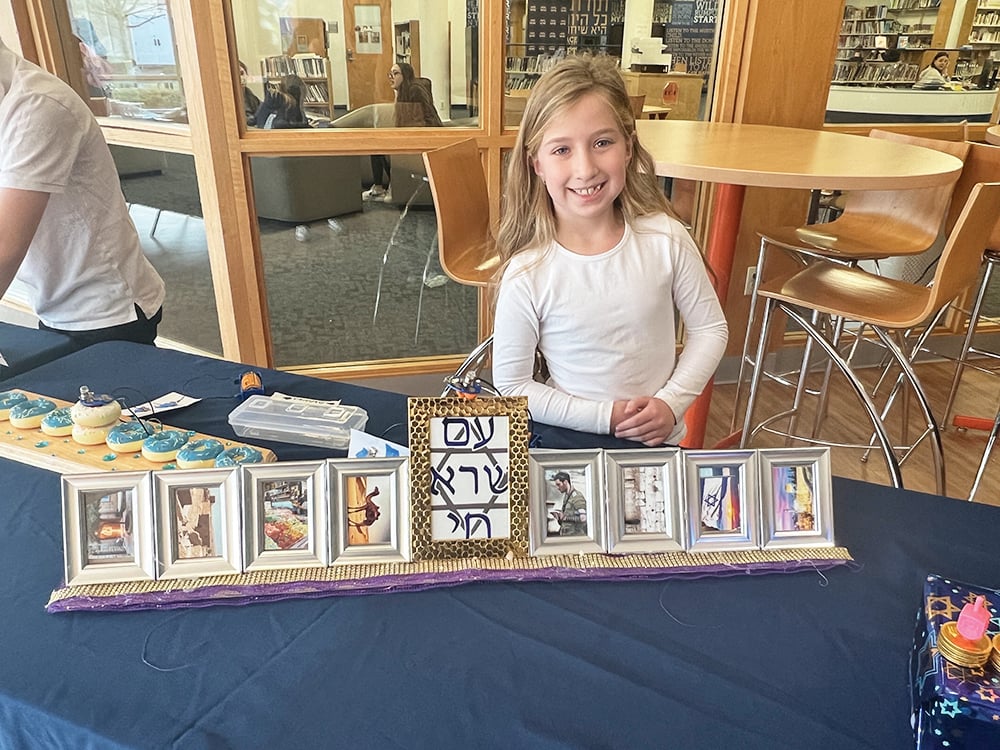





If you asked Livingston mom Mindy Scheier to describe herself a few years ago, she might have emphasized that she was a fashion designer. Then she would tell you about how she became the founder of Runway of Dreams, an organization that develops adaptive, stylish clothes for children like her son Oliver who has muscular dystrophy. Talk to her now, and she will tell you about another part of her identity that has been strengthened: the Jewish one.
Scheier was one of 35 women in the fashion industry who were selected from hundreds of applications to visit Israel with The Jewish Women’s Renaissance Project (JWRP), a Maryland- based group that takes Jewish mothers on trips to Israel to bring them closer to their heritage. Scheier said the trip was beyond anything she imagined. “I am so enamored of the Israeli people—their dedication to our people and land,” she said after returning home. “I learned that the Torah teaches us values that relate to modern-day thought. I talked to my husband and kids about it—about what’s important. It was really eye opening.”
For Scheier, the July 26-August 2 trip was about connecting with Judaism, with other influential women in the fashion industry and with contacts who could help produce and market Runway of Dreams clothing all over the world. Although very involved in her Jewish community, she had never been to Israel. She had been waiting for the right time—and with three children and many projects, that time eluded her—until the JWRP invited women in the fashion industry from all over the world to apply for this trip.
The group visited all the places that everyone in Israel must go to, like the Kotel, the Dead Sea and the Judean desert. But they also met with the people putting Israel’s fashion industry on the map: designers, heads of guilds and other prominent people in the Israeli fashion world. “We saw 3D jewelry created from a printer, computerized software that dictated patterns and sewing techniques, and progressive fashion-tech start-ups,” Scheier related. “It was unbelievable to see.” They also participated in a special JWRP fashion show in Tel Aviv’s Jaffa neighborhood, headlined by leading names in Israeli fashion.
But the highlight of the trip for Scheier was her visit to Beit Issie Shapiro, a school for young adults with disabilities. Scheier said she met with the director who knew about Runway of Dreams and was honored that she was there. “I was halfway around the world and they knew who we were,” Scheier said. “That’s what this trip was really about: spreading our mission and forming partnerships. It was tremendous.”
Scheier began Runway of Dreams in 2013. She started with pieces bought at department stores and adjusted them so Oliver could dress himself. She also spent eight months surveying families who had children with disabilities to understand if the challenges Oliver faced were shared by other children. “I got responses from all over the world in a few days, from people with vastly different disabilities like autism, muscular dystrophy and dwarfism,” Scheier said.
Three categories emerged that were needed by all people with disabilities: garments that were easier to close, adjustable for differently shaped bodies and had alternate ways in which the wearer could get in and out of them. For example, a child with low muscle tone can’t get a sweatshirt over his head. Scheier took the information, bought clothing off the rack and implemented modifications in all those categories. Then she conducted focus groups with the samples. Once she determined that she was on the right track, she looked for an industry partner to produce them. A contact introduced her to Tommy Hilfiger who launched Runway of Dreams’ first line of adaptive children’s clothing in February. Many items sold out in a week, Scheier said. The fall collection will be out shortly.
While children and adults everywhere search for clothing that suits their personality and identity, the challenge is much harder for people with disabilities. Scheier said her clothes have helped Oliver feel more comfortable in every aspect of his life. “The clothes normalize him so he can do the things other children can do such as going to the bathroom. If pants have zippers and buttons, that’s not an option.”
Scheier does not have an exclusive partnership with Tommy Hilfiger, and hopes Runway of Dreams can produce adaptive clothing for people of all ages with any budget. “The challenges are consistent for all people with disabilities,” she adds. From a marketing perspective, her biggest challenge is educating the fashion industry. “These are consumers, no different from anyone else, but they have not been serviced by the fashion industry. Bridging that gap is a hurdle that needs to be jumped over.”
The JWRP trip to Israel was led by Adrienne Gold, a Canadian television personality and fashion commentator who became a Jewish educator after she visited Israel 12 years ago. After years of serving on the JWRP board, she began working for the organization full-time. JWRP is now getting financial support from Israel’s Ministry of Diaspora Affairs, and is branching out to organize industry-specific trips; this was the first one and an exciting one for Gold. “All the years I spent in fashion are being translated into what I love doing most,” Gold told JLNJ from Israel where she was preparing for her group’s arrival. “Tel Aviv has become a legitimate fashion capital. Israel is the start-up nation—and that applies equally in the fashion industry. Designers are making clothing that is edgy but can be worn by any woman from 18 years old to 50 plus years. They have a Middle Eastern, asymmetrical feel. They are structured, tailored and beautifully made. Israel has always had great swimwear designers. Today, Israelis are also creating higher-end runway-style clothing.” For everyday wear, Gold said Israeli designers are making deconstructed linen dresses that you can wear in the blistering heat but look fresh. “They can be worn by plus-size and waif-sized women alike—just user friendly.”
Gold said that as a religiously observant woman, she is happy to see that modesty has become fashionable. “It’s now a huge trend to be buttoned up to the neck, and the mid-calf length is also trendy,” she said. “I think this is a reaction to excessive representation of flesh. Youth has a short shelf-life. Fashion can be tyrannical to women.” She noted that a close, non-Jewish friend was wearing a Dolce and Gabbana flip dress with a T-shirt underneath, a style more associated with day-school graduates.
Gold said one of the criteria for accepting a woman on this trip—besides her expertise in the fashion industry—was her desire to integrate Judaism and spirituality into her life. That’s exactly what the trip accomplished for Mindy Scheier. “I am a fashion designer by trade and now I can bring my two worlds together to make a difference.”













